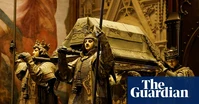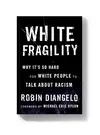Fifteenth century explorer's true origins revealed after DNA analysis from samples buried in Seville Cathedral
The centuries-old mystery over Christopher Columbus's nationality has been revealed by scientists in a Spanish TV documentary after using DNA analysis.
The 15th explorer was Jewish and from Spain, according to Columbus DNA: His True Origin, a programme broadcast on national broadcaster RTVE on Saturday to mark Spain celebrating its national day and commemorating Columbus's arrival in the New World.
Researchers led by forensic expert Miguel Lorente tested tiny samples of remains buried in Seville Cathedral, long marked by authorities there as the last resting place of Columbus, although there had been rival claims. The team compared them with those of known relatives and descendants.
The tomb inside Seville cathedral: it is a large and elaborate stone construction on a pedestal with statues of heraldic figures at its corners
DNA study confirms Christopher Columbus's remains are entombed in Seville
Countries have long argued over the origins and the final resting place of the divisive figure who led Spanish-funded expeditions from the 1490s onward, opening the way for the European conquest of the Americas.
Many historians have questioned the traditional theory that Columbus was from Genoa in north-west Italy. Other theories ranged from him being a Spanish Jew, Greek, Basque or Portuguese.
Lorente, briefing reporters on the research on Thursday, had confirmed previous theories that the remains in Seville belonged to the explorer.
He said: "Today it has been possible to verify it with new technologies, so that the previous partial theory that the remains of Seville belong to Christopher Columbus has been definitively confirmed."
Research on the nationality had been complicated by a number of factors including the large amount of data but "the outcome is almost absolutely reliable," Lorente added.
Columbus died aged 55 in the northwest Spanish city of Valladolid in 1506 but wished to be buried on the island of Hispaniola that is today shared by the Dominican Republic and Haiti.
His remains were taken there in 1542, then moved to Cuba in 1795 and then, it had been long thought in Spain, to Seville in 1898.
In 1877, workers found a lead casket buried behind the altar in a cathedral in Santo Domingo, the capital of the Dominican Republic, containing a collection of bone fragments the country says belong to Columbus.
Lorente said both claims could be true as both sets of bones were incomplete.






Jump in the discussion.
No email address required.
R-slurred him being Jewish is one claim (that his mother was from a Jewish family at least and transmitted some portions of that culture to Columbus even if he himself wouldn't know) but it's well recorded his family was from an inland Ligurian town under Genoa.
Jump in the discussion.
No email address required.
More options
Context